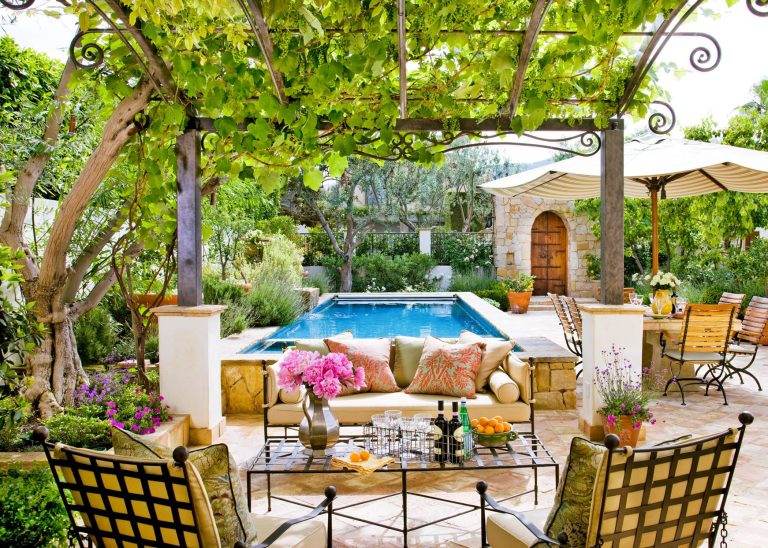Key Takeaways
- Designing a functional and appealing outdoor space can enhance your home’s value and personal enjoyment.
- Incorporating native plants reduces maintenance and benefits the environment.
- Lighting, seating, and water features add unique touches and create a welcoming atmosphere.
- Environmental considerations and sustainability play a crucial role in modern garden designs.
Functional Design for Outdoor Spaces
Crafting an inviting outdoor space is like painting on a canvas with plants, paths, and personal touches. As the Easton MD real estate experts Benson & Mangold Real Estate can attest, a well-designed garden can significantly enhance a home’s curb appeal and value. Begin by defining how you wish to use the space: a sanctuary for relaxation, a lively hub for entertaining, or a colorful playground for children.
Functionality is key. When designing an outdoor space, it’s essential to consider the activities you’ll be engaging in and the flow and accessibility of the area. Think about how paths and patios connect various zones, creating an easy transition from one to another. Do you need a pathway to your vegetable garden or a patio space adjacent to your kitchen that can double as a dining area? With thoughtful design, your garden can cater to various needs simultaneously, offering both practicality and visual appeal.
The Beauty of Native Plants
For a thriving, low-maintenance garden, embrace native plants. These plants thrive in your local climate and soil, needing less water and fewer chemicals. They support local wildlife, attracting beneficial insects and birds and creating a balanced ecosystem. Native plants have evolved with native fauna, providing essential services.
Including native plants can transform your garden into a sanctuary where you can enjoy nature’s displays. Picture butterflies fluttering among wildflowers while finches perch on shrub branches. The seasons bring a dynamic palette of colors and textures, keeping your garden lively.
Lighting, Seating, and Water Features
The magic of any garden often emerges at night, with accent lights highlighting the landscape’s features. Proper lighting enhances safety and adds depth and drama to outdoor spaces. Solar-powered lights are an eco-friendly option easily integrated into your garden’s design. Consider options like string lights for a festive atmosphere, spotlights for specific plants or features, and path lights for walkways.
Adding seating and water elements complements the ambiance. Seating should be comfortable and functional, whether a rustic bench under a tree or plush patio furniture by a fountain. Water features like ponds or bubbling fountains introduce soothing sounds, reduce stress, and mask urban noise, serving as focal points and providing habitats for aquatic life, further enriching your outdoor retreat.
Eco-Friendly Practices in Garden Design
Incorporating eco-friendly practices into garden design is essential today. Simple measures like using rain barrels for irrigation, composting waste, and reducing chemical fertilizers can significantly impact the environment.
Consider planting perennials that return yearly and avoid overwatering to conserve resources. They serve as infrastructure providers, reducing household carbon footprint and contributing to local ecosystem health.
Replacing traditional lawns with drought-resistant plants and ground covers drastically lowers water consumption. Interplanting companion plants naturally deters pests, minimizes water needs, and boosts plant health. Being mindful of your inputs and striving for sustainability connects you with nature and ensures your outdoor space remains vibrant for future generations.
Maintenance Tips for Year-Round Beauty
Maintaining a garden’s beauty through seasons requires dedication. Regular tasks like pruning, mulching, and reseeding transform a tired garden into a stunning display year-round. Autumn is ideal for pruning, while spring mulch prepares plants for summer’s heat. Adjust maintenance strategies with the seasons: protect vulnerable plants in winter, feed and prepare for growth in spring, water consistently in summer, and prepare for colder months in fall. Awareness of nature’s rhythms can enhance enjoyment and success as a gardener. Investing time and care yields immediate visual rewards and long-term satisfaction from creating lasting beauty.
Adding a Personal Touch: The Essentials
Your garden extends your home, reflecting your style. Use vibrant colors, unique art, or whimsical elements to personalize your space. Create a theme that resonates with you or evokes nostalgia. You might incorporate Mediterranean elements like terracotta pots and drought-friendly succulents or choose a tranquil Japanese garden with zen stones and calm water. Your choices should express your tastes and the stories you want to tell. Imprinting your personality on a garden creates a rewarding environment that reflects nature’s seasons and your personal transitions.
Trends to Watch in Outdoor Design
Gardening trends evolve, but some ideas endure. Vertical gardens maximize space, and smart irrigation ensures efficient water use. Sustainability inspires trends that blend technology with nature. From edible gardens offering fresh produce to minimalist designs promoting tranquility, watching emerging trends can spark new ideas to enhance your garden’s beauty and sustainability. Trends emphasize sustainability and efficiency while highlighting creativity and personalization, allowing you to create environmentally conscious and aesthetically pleasing spaces tailored to your preferences.

